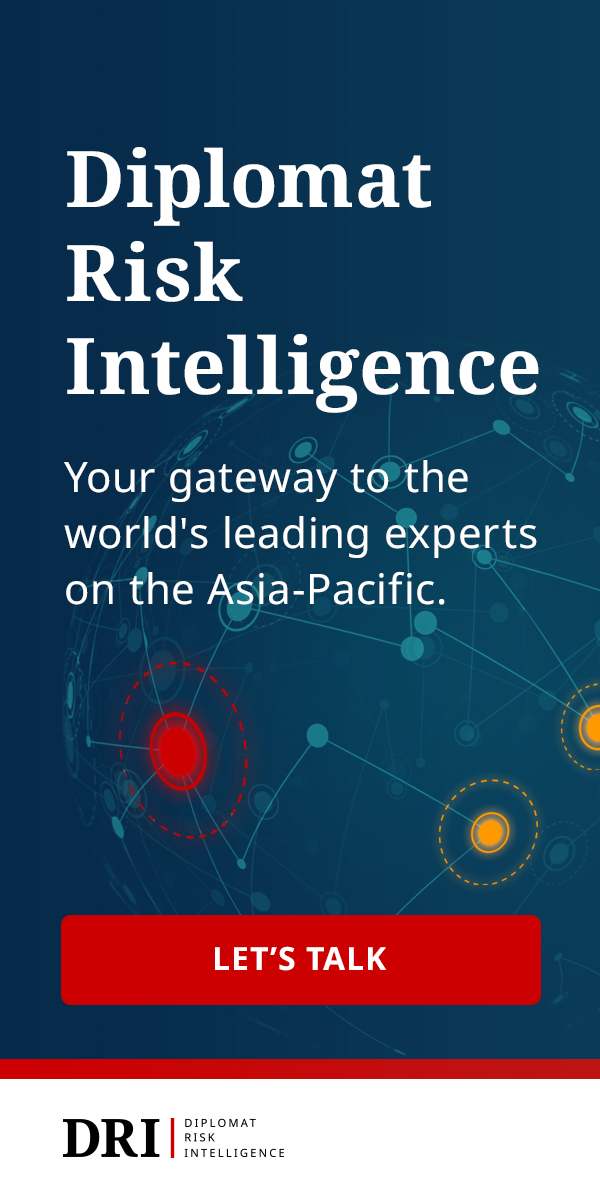| Welcome to the latest issue of Diplomat Brief. This week our top story explores how Taiwan’s military is boosting the drone industry on the island. We also have an interview with Ajai Sahni, founding member and executive director of the New Delhi-based Institute for Conflict Management and South Asia Terrorism Portal, on the Khalistani movement and the Canada-India spat. |
| Story of the week | ![[object Object]](https://thediplomat.com/diplomat-brief/2023/vol40/images/feature.jpg) | Security Taiwan’s Drone Industry Takes FlightWhat Happened: On September 14-16, drone producers and other defense firms gathered at the Taipei Aerospace and Defense Technology Exhibition (TADTE). The event featured nearly 280 exhibitors, an increase of more than 70 percent since the last exhibition in 2019. More than three dozen companies involved in the development and manufacturing of drones were present, a clear sign of Taiwan’s increased interest in unmanned vehicles of all kinds as it seeks to shore up defenses against a potential invasion. Our Focus: “Last year, the government [in Taiwan] launched a research and development cluster devoted to drones and initiated a competitive test and evaluation program for five categories of drones for the military,” Dan Gettinger, a prominent expert on drones and their use in warfare, writes for The Diplomat. The new Asia UAV AI Innovation Application R&D Center, based in Taiwan’s Chiayi County, is the star of this push, as evidenced by its sizable presence at TADTE 2023. Other participants included the National Chung-Shan Institute of Science and Technology (NCSIST), the military’s go-to supplier for armed drones; Thunder Tiger Group, which boasted a USV and a UUV; and several firms offering munitions-capable UAVs. What Comes Next: Taiwan’s drone industry is expanding fast, thanks in part to increased demand from the military. By 2028, the Ministry of National Defense intends to acquire 700 “military grade” and more than 7,000 “commercial grade” drones for the armed forces. Many of the companies in the running for those contracts were the same ones participating in TADTE 2023, providing an early glimpse into the future of Taiwan’s military. But ambitions are even bigger: As Gettinger notes, “Taiwan is positioning itself to provide drones to other countries that are likewise seeking to wean themselves off technology from China.” Read this story |
| Behind the News | INTERVIEW Ajai SahniAjai Sahni, founding member and executive director of the New Delhi-based Institute for Conflict Management and South Asia Terrorism Portal, on the state of today’s Khalistani movement: “At the level of security, the Khalistan movement is a domestic irritant, and will so remain, as long as other issues afflicting the state are not addressed… While we are happy – and right – to condemn what is happening in Canada, it would be more productive to look inward and see the mischief our own political parties are doing in Punjab.” Read the interview |
| This Week in Asia | Northeast Asia The South Korea-U.S. Alliance Turns 70October 1 marked the 70th anniversary of the South Korea-U.S. alliance. It’s been a good year for the relationship, from President Yoon Suk-yeol’s state visit to the United States in April to the Camp David summit with Yoon, U.S. President Joe Biden, and Japan’s Prime Minister Kishida Fumio in August. South Korea-U.S. relations have grown closer on a number of fronts, from expanded military exercises on the Peninsula to diplomatic convergence in far-flung regions like the Pacific. As a result, South Korea, long overlooked, is finally receiving its due recognition. Find out more | South Asia Pakistan Reels From Another Terror AttackOn September 29, a bomb attack in Pakistan’s Balochistan province killed at least 52 people and injured almost 70 more. The bombing targeted a 500-strong gathering meant to celebrate the Prophet Muhammad’s birthday. The deadly attack drove home yet again the huge surge in terrorism Pakistan has suffered since the Taliban returned to power in Afghanistan. Meanwhile, locals, especially those in Balochistan, question the will of authorities to truly root out Islamic extremism. The district where Friday’s attack occurred, Mastung, has long been a hotbed for Islamic radicalism and sectarianism, and has suffered a string of terrorist attacks over the last 12 years as a result. Find out more | Southeast Asia Indonesia Launches Southeast Asia’s First HSR LineIndonesia’s President Joko “Jokowi” Widodo this week launched his country’s – and the region’s – first high-speed railway. The $7.3 billion rail line, a milestone project of China’s Belt and Road Initiative, has been christened “Whoosh,” an Indonesian acronym meaning “timesaving, optimal operation, reliable system.” The bullet train will run at speeds of up to 350 kilometers per hour between the capital Jakarta and the city of Bandung in West Java, cutting travel time between the two important cities from three hours to around 40 minutes. While the rail project has had its share of problems – it was completed three years behind its initial schedule, and went $1.2 billion over budget – it stands as a legacy achievement of Jokowi’s two terms in office, which will come to an end after next year’s presidential election. Find out more | Central Asia Bill Targeting NGOs Moves Forward in KyrgyzstanA “foreign representatives” bill in Kyrgyzstan reminiscent of Russia’s foreign agents law has passed a first reading in the Kyrgyz parliament. The controversial law seeks, among other things, to make NGOs that receive funding from abroad register as “foreign representatives” or face criminal liability. The bill’s sponsors have dropped from 39 to 20, but its main proponents are determined to push it ahead. Watch closely – it’s not clear how quickly the next steps may be taken or whether the bill will fizzle out like a 2016 attempt did in its third reading. Find out more |
| Visualizing APAC |  | When broken down by population segment, India’s Fast Moving Consumer Goods (FMCG) consumption reflects a stark divide in rural vs. urban trends post-pandemic. See the full picture |
| Word of the Week | Politics जुमलाJumla, Hindi (from Arabic) for “empty promise” or, in the context of politics, a “gimmick” to pull in votes. Find out more |
| Webinar Alert | ![[object Object]](https://thediplomat.com/diplomat-brief/2023/vol40/images/webinar.jpg) | The Diplomat Asks What to Expect From Maldives’ New PresidentOn September 30, Maldivians selected their next president in a run-off between the top two finishers in the first round: Male Mayor Mohamed Muizzu and incumbent President Ibrahim Solih. Muizzu prevailed handily, with 54 percent of the vote, setting the stage for a transition of power. It's been an especially complex election cycle, featuring infighting in the ruling party and contestation within the opposition PPM-PNC coalition over the preferred candidate, all amid longer-standing concerns about free elections in Maldives' young democracy. Meanwhile, the geopolitics of the election loomed large, with the PPM-PNC coalition undertaking a high-profile "India Out" campaign in recent years. Join us on October 7 at 9 a.m. U.S. Eastern time / 6 p.m. MVT for a live webinar on Maldives’ future, in terms of both domestic and foreign policy. Sign up for the webinar |
|  |

![[object Object]](https://thediplomat.com/diplomat-brief/2023/vol40/images/feature.jpg)

![[object Object]](https://thediplomat.com/diplomat-brief/2023/vol40/images/webinar.jpg)
